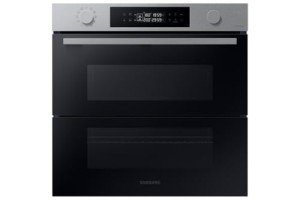Understanding Built-In Electric Cookers: A Comprehensive Guide
The modern kitchen has progressed over the years, embracing innovation that intends to streamline cooking while enhancing performance. Among the most ingenious appliances that have actually gained appeal is the built-in electric cooker. This article checks out the functions, advantages, and considerations when choosing built-in electric cookers. It will likewise attend to typical questions, providing a detailed check out their functionality and effect on kitchen design.
What is a Built-In Electric Cooker?
A built-in electric cooker is an integrated cooking appliance created to fit seamlessly into kitchen cabinets. Unlike freestanding designs, these cookers are completely set up in the kitchen, using a built-in aesthetic. They are available in numerous types, consisting of ovens, hobs, and mix systems, and normally utilize electrical energy as the primary heat source.
Types of Built-In Electric Cookers
The category of built-in electric cookers can be broken down into a number of categories:
| Type | Description |
|---|---|
| Built-In Ovens | Integrated cooking systems utilized for baking, roasting, etc. |
| Electric Hobs | Flat cooking surfaces with heating components for stovetop cooking. |
| Combi Ovens | Combination systems that operate as both a microwave and a conventional oven. |
| Steam Ovens | Ovens created to prepare food with steam, protecting nutrients and tastes. |
Benefits of Built-In Electric Cookers
Built-in electric cookers offer a number of advantages that make them a popular option among homeowners and cooking lovers alike. Here are some key benefits:
- Space Efficiency: Built-in electric cookers conserve counter area, making them perfect for smaller sized kitchen areas where optimizing space is crucial.
- Aesthetic Appeal: These cookers provide a streamlined and polished seek to the kitchen. Their integrated style enhances the total kitchen cabinetry, adding to a modern visual.
- Improved Functionality: Many built-in electric cookers featured advanced features such as digital controls, self-cleaning options, and wise technology for remote monitoring.
- Enhanced Safety: Built-in designs typically have security features such as auto shut-off and kid locks, making them safer in environments with kids.
- Versatility: From stove to induction hobs, built-in electric cookers provide diverse cooking options, accommodating different culinary needs.
Factors to consider Before Installing a Built-In Electric Cooker
While built-in electric cookers bring lots of benefits, some considerations must be considered before purchasing:
- Installation Requirements: Built-in cookers typically require expert installation, which might include electrical adjustments.
- Cost: These models typically come at a higher rate point than portable appliances, both for the units themselves and installation.
- Minimal Mobility: Once installed, built-in electric cookers can not be easily moved, which can be a downside for those who may move often.
- Compatibility: Homeowners need to ensure that their kitchen area supports the particular dimensions and electrical requirements of the cooker.
Installation and Maintenance
Correct setup and maintenance are essential to guarantee ideal performance and longevity of built-in electric cookers. Here are some steps and pointers:
Installation Process
- Measurement: Measure the designated area in the kitchen to make sure the cooker fits appropriately. Consider russell hobbs built under double oven , depth, and width of the appliance.
- Electrical Setup: Check if existing electrical work meets the cooker's power requirements. This may involve consultation with an electrical expert.
- Ventilation: Ensure the kitchen has suitable ventilation if the cooker requires it.
- Follow Manufacturer Instructions: Always stick to the maker's installation guidelines to avoid warranty concerns.
Maintenance Tips
- Regular Cleaning: Keep the cooker tidy by immediately wiping spills and food residues. Self-cleaning choices can also be used when available.
- Examine Seals and Gaskets: Inspect the door seals regularly to guarantee they remain in excellent condition, avoiding heat loss and improving efficiency.
- Expert Servicing: Schedule professional maintenance checks to guarantee all elements are working correctly and resolve any concerns.
Regularly Asked Questions (FAQs)
What is the lifespan of a built-in electric cooker?
The life expectancy of built-in electric cookers usually ranges from 10 to 15 years, depending upon use and upkeep.
Can a built-in electric cooker be repaired?
Yes, numerous built-in electric cookers can be repaired. Nevertheless, the repair work costs can be significant, so it's necessary to weigh the expense of repair work against replacement.
Are built-in electric cookers energy-efficient?
Built-in electric cookers can be energy-efficient, specifically designs with energy-saving features such as induction technology or smart heating aspects.
Do built-in electric cookers require particular cabinetry?
Yes, built-in cookers need to be set up in cabinets developed to accommodate them, making sure appropriate ventilation and support.
How do I choose the right built-in electric cooker for my requirements?
Consider your cooking routines, kitchen space, and wanted features. It's advantageous to check out reviews and seek advice from with kitchen home appliance specialists while making a decision.
Built-in electric cookers represent a fusion of performance and sophistication in contemporary kitchen style. They boost the cooking experience while complementing the general aesthetic of the kitchen. As with any significant device investment, comprehending the benefits, considerations, and maintenance included is important for making an informed choice. By incorporating a built-in electric cooker, property owners can transform their cooking experiences and create lasting impressions in their cooking areas.

